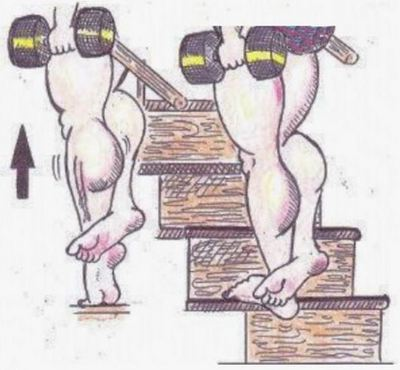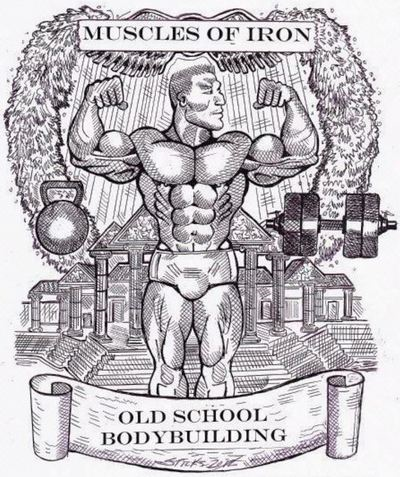Most home gyms are relegated to either the basement or the garage and have a staircase leading to the upper levels. Those stairs are valuable training tools and part of your gym. With hand railings for stability, many movements are possible. These include single or double-stair step-ups for the quads and single rear leg raises with ankle weights for the lower back.
Perhaps the best movement for the calves is the single-leg heel raise with a dumbbell. It hits the total lower leg muscle belly and all the stabalizers, including all four ligaments of the ankles. It also strengthens and stretches the arch of the foot and the Achilles tendon. When you can achieve 20 reps with either leg, it's time to add weight. A 10-pound plate or dumbbell should be a good initial starting weight. Three sets of 12-15 should be enough for anyone to grow on.

In my early training days I used to perform five sets of heel raises, toes on a board with a barbell in the power rack. This was followed by another five sets of toe presses, in leg position, to blast my puny calves. It wasn't until I practiced the single leg version with the short set and rep scheme that my 16"ers became 17"ers in about six months. This approach was based on advice from an article by Nautilus founder Arthur Jones. One humourous segment of this article was Jones trying to convince his francise-owning customers that they didn't need a Nautilus calf machine to build big calves. The Nautilus man stated,
“A heavy dumbbell in one hand, a block of wood to stand on, and you're in business! Why do you !#$& need a complicated machine that won't do it any better?”
The illustration above shows the one-legged heal raise in action. Here are some tips to get the most benefit from this exercise:
- Train with the dumbbell on the side of the working leg.
- Keep the ball of the foot firmly planted on the edge of the step.
- Allow arch and heel to drop into a full stretch, pause, then raise back up with full extension of the foot.
- If you wobble during repetitions, then reduce the working weight.
- Two to three sets of 12-15 reps are recommended.
So head for that first basement step. Practice. Add weight slowly. Use good form and full range of motion and reap the benefits in strength and development that comes from training downstairs.

Add Comment